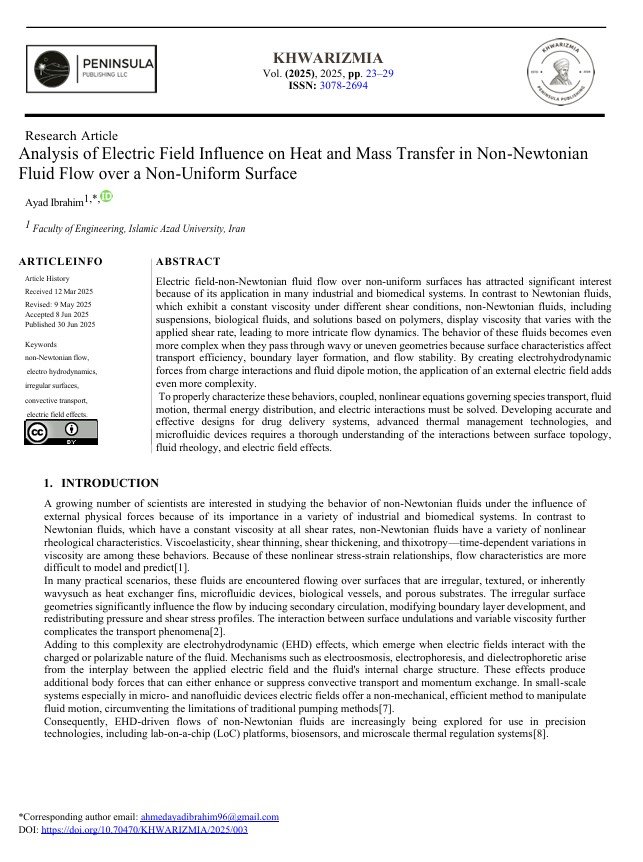Analysis of Electric Field Influence on Heat and Mass Transfer in Non-Newtonian Fluid Flow over a Non-Uniform Surface
Main Article Content
Abstract
Electric field-non-Newtonian fluid flow over non-uniform surfaces has attracted significant interest because of its application in many industrial and biomedical systems. In contrast to Newtonian fluids, which exhibit a constant viscosity under different shear conditions, non-Newtonian fluids, including suspensions, biological fluids, and solutions based on polymers, display viscosity that varies with the applied shear rate, leading to more intricate flow dynamics. The behavior of these fluids becomes even more complex when they pass through wavy or uneven geometries because surface characteristics affect transport efficiency, boundary layer formation, and flow stability. By creating electrohydrodynamic forces from charge interactions and fluid dipole motion, the application of an external electric field adds even more complexity.
To properly characterize these behaviors, coupled, nonlinear equations governing species transport, fluid motion, thermal energy distribution, and electric interactions must be solved. Developing accurate and effective designs for drug delivery systems, advanced thermal management technologies, and microfluidic devices requires a thorough understanding of the interactions between surface topology, fluid rheology, and electric field effects.
Article Details

This work is licensed under a Creative Commons Attribution 4.0 International License.
